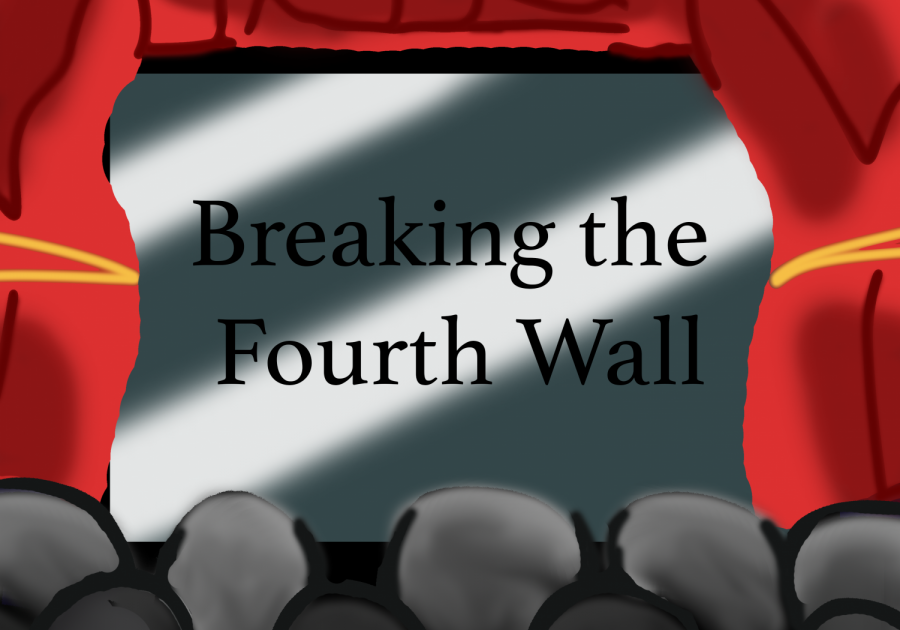Gwen Stacy and the dismantling of ‘Women in Refrigerators’
Spoilers for the “Amazing Spider-Man” films
November 20, 2020
‘Women in Refrigerators,’ or ‘fridging’ is a term that refers to the death or injury of a female character used as a plot device in order to further the story or development of a male character, typically in comic books. Characters dying is a staple of comic book storytelling, but the difference between male and female character deaths has been argued as male characters tend to be resurrected, with female characters being less lucky. Probably the most classic example of this trope occurred in Marvel’s “The Amazing Spider-Man” issue #121, published in 1973, titled “The Night Gwen Stacy Died.”
The issue famously depicts Green Goblin kidnapping the love of Peter Parker’s life, Gwen Stacy, and luring him to a bridge in New York City, where Goblin tosses Gwen over the side of the bridge from one of its towers. Peter immediately shoots a web after her, catching hold of her leg and stopping her fall. However, when Peter pulls Gwen to safety, he discovers that the sudden stop from when the webbing grabbed ahold of her snapped her neck, and Gwen Stacy is dead. The real-life explanation for this tragic death of a popular character has commonly been explained as the writers were looking for a major character to kill, and the natural progression of Gwen and Peter’s relationship leading to marriage did not suit the writer’s plans for the heroic character. Thus, Stacy was killed off. Gwen’s death served to motivate Peter in his fight for justice nearly as much as the death of his Uncle Ben had. The death of Gwen Stacy was a staple in the mythology of the webslinger, like an extended part of his origin story.
Since then, the killing and harming of female characters in comics had grown to affect many characters, famously including Barbara Gordon/Batgirl, who was shot and paralyzed by the Joker so as to prove a point to her father and Batman (a controversial event which remained the character’s status quo until 2011), and the ‘90s Green Lantern Kyle Rayner’s girlfriend Alexandra DeWitt, who was murdered by an enemy of Kyle’s and stuffed into her refrigerator. The latter event in 1994 led to fans (including Gail Simone, who later became a famous comic writer herself) banding together in 1999 to create a website called “Women in Refrigerators” (whose name was inspired by Alexandra’s brutal death) to cite and raise awareness of sexism in comic books.
Flash forward to 2020 and the changes in comic books are easy to see. There has been an increase in female-led books and writers are somewhat more considerate when it comes to killing off their characters. One glaringly notable change, however, is the prominence and use of Gwen Stacy in modern media. After her death in the ‘70s, the character was used very little afterwards (her most notable appearance being in the ill-received “Clone Saga” storyline, where her brief return is only as a clone).
Gwen’s most notable role in Spider-Man media outside of the comics was in the 2012 and 2014 blockbuster movies “The Amazing Spider-Man” and “The Amazing Spider-Man 2.” Gwen, played by Emma Stone and reimagined as a gifted student and intern at Oscorp, is featured in a prominent role in the films. In the first, she plays a vital part in defeating the villain of the movie through her advanced use of science, and she also develops a relationship with Peter.
The second film delves deeper into the characters and their relationships, with a central focus of the film being that Peter doesn’t want to endanger Gwen through his actions as Spider-Man. Although the film was met with mixed reviews and poor criticism, it beautifully humanized Gwen and gave her her own voice, character and personality outside of being the “love interest.” Gwen is in the running to attend Oxford, she refuses to let Peter control her life and their relationship and she investigates a conspiracy within Oscorp. In the climax of the film, she and Peter reconcile their relationship and Gwen makes a firm decision to assist him in defeating the villain, Electro, despite Peter’s objections. She firmly tells Peter that, “Nobody makes my decisions for me, alright? Nobody!”
Over the course of the two films, Gwen is seen as Peter’s hope, as she displays warmth, confidence, intelligence and capability. However, it is this same hope that makes her a target for the film’s secondary villain, Harry Osborn, who feels that Spider-Man took his own hope away from him. In a scene that is tragically and beautifully done, Peter desperately scrambles to catch Gwen’s fall as she is sent falling through a clock tower. He manages to catch her with his webbing, but her head strikes the ground and she dies. The film uses Gwen’s death to emotionally break Peter, but a recorded message from Gwen’s graduation speech once again revitalizes his hope. I have to admit the film was a bit on the nose with teasing her death throughout the movie, as the filmmakers obviously knew that longtime fans were aware of her comic book history. Despite her doomed destiny looming over the story, Gwen’s portrayal in these films paints Gwen as a capable character who is even smarter than Peter. She goes through her own arc, story and conflicts in the films. She maintains both a status of a present character in the films as well as a source of love and hope for the hero. When she does die, it isn’t solely to advance Peter’s own character. Instead, it reflects how the character was portrayed in life. Gwen was put in Goblin’s way because of her refusal to stand by the sidelines, because she was unwaveringly determined to help Peter. She knew the risks of being associated with Spider-Man better than anyone, and yet she made the decision all on her own.
While in her life she represented hope, that theme remained consistent in her death. Peter deals with the grief of losing a loved one, and Gwen is a model example of one taken too early from life. I once heard writing advice along the lines of, when you kill off a side character you should imagine their arc as if they were the main character. Does their death feel as satisfying as if they were the main character? Gwen’s arc and death in “The Amazing Spider-Man 2” in this light indeed makes sense, though it is heartbreaking. She represents someone with potential and gifts and ambitions, who as a byproduct of those ambitions and her dedication, died. While her death does serve as a catalyst in Peter’s arc, it is no longer purely a plot device. In the “Amazing Spider-Man” films Gwen Stacy became a character in her own right and died as her own character, love interest or not.
Yes, by killing off Gwen in the film, the director in a way reinforced the idea of fridging by giving into the expectation of it. The foreshadowing of her death loomed over the film morbidly and the death of her character backed by the comic lore is a discredit to the potential and importance of the character. However, until this point, Gwen Stacy really was just known for being the one who died. What these films did was give her a deep and rich character that raised the stakes of her demise outside of just Peter’s caring for her. The choice to kill her off, I assume, was made because of just how iconic her death is. Not following that storyline could feel, to directors, like not making Batman and Catwoman a couple, or not killing off Jason Todd. In comic books, basic elements of lore tend to stick throughout interpretations. What these films did that I feel took a step in the right direction was actually making Gwen an important character. She died because a baddie wanted revenge and she was the girlfriend of Spider-Man, yes, but she spent both films fighting to be vital to the story and to make her own decisions. It’s just that in the end, she lost.
More importantly, however, was an event that didn’t occur until the “Spider-Verse” event in late 2014 where the character was revitalized in her original medium. Gwen Stacy made her return after 40 years as an alternate universe, web-slinging version of the character. Her origin involved the death of her friend Peter Parker, who was the Lizard of her universe, and she was framed for his death. (Peter’s death in her origin here ironically mirror’s her own death in the main universe.) Once the “Spider-Verse” event concluded, Gwen was given her own comic title, “Spider-Gwen,” that is still running. Gwen has become a popular Spider-Man character in her own right, as opposed to being ‘that love interest who died tragically a long time ago.’ She has appeared in several modern animated series as well as the feature animated film “Into the Spider-Verse,” without any reference or acknowledgement of her former status as just another casualty of fridging. Media no longer portrays her as the ill-fated love interest of Marvel’s most beloved hero, but as an iconic hero in her own right. I first knew Gwen when she was Peter’s dead love, then as his spunky and intelligent girlfriend, and now I know her currently as Spider-Gwen. Girls who grow up now will see Gwen Stacy firstly as a superhero that can be for them what Spider-Man is for boys.
Similarly, Barbara Gordon (Batgirl) initially overcame her fridging event to become a vital part of the Batman family and the entire DC Universe as her hacker alter ego Oracle for over 20 years, and has even regained her title of Batgirl for nearly a decade. She just recently returned to the mantle of Oracle, though this time without the inciting trauma of having been used as a plot device, and the new status quo might involve her continuing being just as effective in this completely self-realized role as she was as Batgirl.
Thanks to fans speaking out about injustices in entertainment and writers acknowledging their failings, comics look very different now than they used to. Fridging occurs far less and once-discarded female characters have come back to dominate books, movies and television. Stories appear to be far more developed in a way that try to satisfy all the characters involved. Gwen Stacy has become a hero not only as Spider-Gwen, but also as a character who has overcome adversity to become her own kind of hero that girls can look up to.





